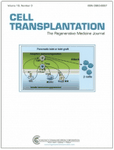
CELL TRANSPLANTATION
Scope & Guideline
Pioneering research in cell transplantation and immunology.
Introduction
Aims and Scopes
- Stem Cell Therapy and Regenerative Medicine:
The journal emphasizes the role of stem cells in regenerative medicine, including their potential applications in treating a variety of conditions such as spinal cord injuries, neurodegenerative diseases, and organ failures. - Transplantation Techniques and Innovations:
Research on novel transplantation techniques and methodologies, including xenotransplantation and the use of bioengineered scaffolds, is a core focus, aiming to improve graft survival and functionality. - Cellular Mechanisms and Molecular Pathways:
Studies investigating the underlying cellular and molecular mechanisms of stem cell therapy, including the interaction of stem cells with their microenvironment and immune modulation, are prominently featured. - Clinical Applications and Case Studies:
The journal includes clinical studies and case reports that provide insights into the real-world applications and outcomes of stem cell transplantation, enhancing understanding of efficacy and safety. - Technological Advancements in Cell Therapy:
Research on innovative technologies, such as CRISPR gene editing and 3D bioprinting, aimed at enhancing the efficacy and precision of cell therapies, is a key area of interest.
Trending and Emerging
- Neuroregenerative Therapies:
A significant increase in research focusing on neuroregenerative therapies, particularly for conditions like Alzheimer's disease and spinal cord injuries, reflects the growing interest in using stem cells to repair nervous system damage. - Extracellular Vesicles and Exosome Therapy:
Emerging studies on the therapeutic potential of extracellular vesicles and exosomes derived from stem cells underscore their role in mediating regenerative effects and immune modulation. - Personalized Medicine and Patient-Specific Therapies:
There is a notable trend towards personalized medicine, with research increasingly focusing on tailoring stem cell therapies to individual patient profiles for optimized outcomes. - Immunomodulatory Properties of Stem Cells:
Research on the immunomodulatory effects of stem cells is gaining importance, as understanding these mechanisms is crucial for improving transplant acceptance and reducing rejection. - Integration of Advanced Technologies:
The incorporation of advanced technologies such as machine learning, AI, and CRISPR gene editing into stem cell research is on the rise, offering new avenues for enhancing therapeutic efficacy.
Declining or Waning
- Traditional Organ Transplantation Methods:
Research focusing on conventional organ transplantation techniques has decreased, possibly due to the increasing interest in stem cell therapies and bioengineering as alternative solutions. - Less Emphasis on Non-stem Cell Therapies:
There appears to be a waning interest in non-stem cell-based therapeutic approaches, as the field gravitates towards exploring the unique properties and advantages of stem cells. - Limited Focus on Single-Mode Therapies:
The journal has moved away from studies that advocate for single-mode therapies, reflecting a trend towards combination therapies that integrate various approaches for enhanced efficacy. - Decreased Publications on Invasive Techniques:
There is a noticeable decline in studies related to invasive transplantation techniques, as more researchers explore less invasive and more patient-friendly options.
Similar Journals

TRANSPLANT INTERNATIONAL
Empowering Knowledge for Better Patient OutcomesTRANSPLANT INTERNATIONAL is a premier open-access journal in the field of transplantation, published by Frontiers Media SA since 1988. With its dedicated scope encompassing the latest research and advancements in organ transplantation and related fields, this journal serves as an essential resource for researchers, clinicians, and healthcare professionals engaged in transplantation medicine. Boasting an impressive 2023 Scopus rank of #17 out of 54 in the Medicine - Transplantation category and a Q2 quartile ranking, it has established itself as a vital publication platform contributing to the global discourse on transplant innovations. As an open-access journal since 2022, TRANSPLANT INTERNATIONAL enhances the dissemination of knowledge, ensuring that pivotal findings are accessible to a broader audience, thereby fostering advancements in patient care and clinical practices. With its base in Italy and operations managed from Lausanne, Switzerland, the journal promises to remain at the forefront of transplantation research through 2024 and beyond.
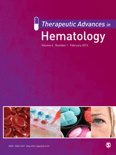
Therapeutic Advances in Hematology
Unlocking new horizons in hematological advancements.Therapeutic Advances in Hematology is a prestigious, peer-reviewed journal dedicated to advancing the field of hematology through innovative research and clinical studies. Published by SAGE Publications Ltd, this journal has become a vital resource for hematology professionals and researchers since its inception in 2010. With its impactful Q1 ranking in Hematology and a Scopus rank of 62 out of 137, it firmly establishes itself as a leader in disseminating significant findings and therapeutic approaches. The journal has been committed to open access since 2019, ensuring that its cutting-edge research is readily available to the global scientific community. Covering a broad scope of topics within hematology, Therapeutic Advances in Hematology is an essential platform for those seeking to enhance their understanding and implementation of therapeutic practices in hematological conditions. The journal embraces submissions from both clinical and laboratory perspectives, fostering collaboration and dialogue among researchers, clinicians, and students alike.
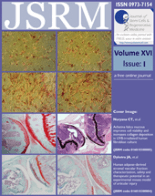
Journal of Stem Cells & Regenerative Medicine
Transforming Science into HealingThe Journal of Stem Cells & Regenerative Medicine is a leading publication dedicated to the advancing field of stem cell research and regenerative medicine. Established in India and published by JOURNAL STEM CELLS & REGENERATIVE MEDICINE, this Open Access journal has been available since 2007, providing researchers and practitioners with free and unrestricted access to high-quality articles. With an ISSN of 0973-7154, the journal is indexed in Scopus, featuring a wide array of topics and insights into biochemistry, biotechnology, cell biology, and molecular biology, as denoted by its relevant quartile rankings. This journal is committed to bridging the gap between laboratory research and clinical applications, making significant contributions to the scientific community. The convergence of innovative studies from 2010 to 2024 positions it as an invaluable resource for those looking to stay at the forefront of stem cell and regenerative medicine research.
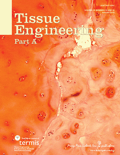
Tissue Engineering Part A
Pioneering the Path to Effective Therapeutic StrategiesTissue Engineering Part A is a prestigious peer-reviewed journal published by MARY ANN LIEBERT, INC that focuses on innovative research and advancements within the field of tissue engineering and regenerative medicine. Since its inception in 2008, this journal has played a critical role in disseminating cutting-edge findings that bridge the gap between laboratory research and clinical application, underscoring its significance in the scientific community. With a diverse scope encompassing biochemistry, bioengineering, biomaterials, and biomedical engineering, the journal ranks notably in the Scopus database, holding a Q2 quartile status across multiple categories, thus reflecting its high impact on ongoing research and professional practice. For researchers, professionals, and students, Tissue Engineering Part A serves as an invaluable resource, offering insights into the latest methodologies and breakthroughs that drive the future of healthcare and therapeutic strategies. While primarily a subscription-based journal, it ensures that vital research is accessible to a broad audience of scientists and engineers committed to advancing the life sciences.

CELL AND TISSUE BANKING
Advancing innovations in biomaterials and transplantation.CELL AND TISSUE BANKING, published by Springer, is a prominent journal dedicated to advancing the fields of biomaterials, biomedical engineering, cell biology, and transplantation. With its ISSN 1389-9333 and E-ISSN 1573-6814, the journal plays a crucial role in disseminating high-quality research from its inception in 2000 to its ongoing contributions through 2024. Situated in the Netherlands, it boasts a respectable 2023 impact factor with notable quartile rankings, positioning it within the Q3 category for biomaterials, biomedical engineering, and transplantation, and Q4 for cell biology. Furthermore, its Scopus rankings underscore its relevance and influence, particularly in the fields of medicine and engineering. Although it does not currently offer open access options, the journal remains a vital resource for researchers, professionals, and students alike, fostering innovation and knowledge transfer in the critical areas of cell and tissue sustainability.

Stem Cells International
Unlocking the Potential of Regenerative MedicineStem Cells International is a premier open access journal published by HINDAWI LTD, focusing on the rapidly evolving field of stem cell research. With an ISSN of 1687-966X and E-ISSN 1687-9678, this journal has been a vital resource since its inception in 2010, showcasing innovative studies and breakthroughs up to 2024. Positioned in Q3 in Cell Biology and Q2 in Molecular Biology for 2023, as well as well-ranked in the Scopus database, the journal serves as an essential platform for researchers, professionals, and students dedicated to exploring the implications of stem cell technology in regenerative medicine and biological research. The open access model ensures wide accessibility, fostering collaboration and knowledge-sharing across the scientific community, making it a cornerstone in advancing the understanding and application of stem cell science.
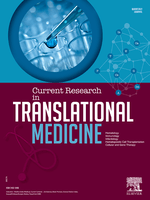
Current Research in Translational Medicine
Elevating Research to Enhance Clinical ApplicationsCurrent Research in Translational Medicine, published by ELSEVIER FRANCE-EDITIONS SCIENTIFIQUES MEDICALES ELSEVIER, is a dynamic open-access journal that has been at the forefront of innovative research since its inception in 2016. With a strong commitment to advancing the fields of biochemistry, hematology, infectious diseases, oncology, and transplantation, the journal provides an invaluable platform for researchers and practitioners to share novel findings that bridge laboratory discoveries and clinical applications. Currently recognized in prestigious categories such as Q1 and Q2 quartiles, this journal emphasizes the importance of translational science in improving health outcomes, supported by a rigorous editorial process and a commitment to high-quality research dissemination. Being listed in reputable databases like Scopus, it enables authors to reach a wide audience, ensuring that their impactful work contributes to the global dialogue on critical medical advancements. With its open access model, Current Research in Translational Medicine encourages widespread collaboration and engagement among the scientific community, solidifying its role as a leading journal in medicine and related fields.
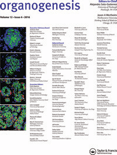
Organogenesis
Pioneering Research in Embryology and Beyond.Organogenesis is a leading journal published by Taylor & Francis Inc, dedicated to advancing the field of developmental biology and regenerative medicine. With an ISSN of 1547-6278 and E-ISSN 1555-8592, this journal spans an extensive research scope that includes embryology, transplantation, and biomedical engineering, distinguishing itself as a crucial platform for researchers and practitioners alike. Its impact is reflected in its performance across various categories in 2023, earning Q3 rankings in Biomedical Engineering and Embryology, Q4 in Developmental Biology, and Q2 in Transplantation, showcasing its reputable standing among peer journals. Moreover, with Scopus rankings indicating strong positioning in the fields of medicine and biochemistry, Organogenesis is essential for those looking to publish or stay updated on pioneering research. The journal facilitates rigorous peer-review and offers a forum for disseminating innovative findings, making it an invaluable resource for academics, professionals, and students committed to understanding the complexities of organism development.

Tissue Engineering and Regenerative Medicine
Pioneering Solutions in Tissue Restoration and RepairTissue Engineering and Regenerative Medicine, published by the Korean Tissue Engineering Regenerative Medicine Society, is a distinguished journal focusing on the interdisciplinary fields of tissue engineering, regenerative medicine, and related biomedical innovations. With an ISSN of 1738-2696 and an E-ISSN of 2212-5469, this journal disseminates cutting-edge research and advancements pivotal to developing therapeutic strategies that improve tissue function and repair. As a testament to its scholarly impact, it holds a Q2 ranking in both Biomedical Engineering and Medicine (miscellaneous) categories, reflecting its influence and relevance within the scientific community, particularly with a Scopus rank placing it in the 82nd percentile among similar journals. Although the journal does not offer open access, it provides vital insights and knowledge to researchers, professionals, and students involved in the quest for innovative solutions in medical science and engineering. With its convergence years extending from 2008 to 2024, the journal continues to be an essential platform for the dissemination of high-quality research that drives the field forward.

Transplantation and Cellular Therapy
Empowering Discoveries in Cell Biology and Molecular Medicine.Transplantation and Cellular Therapy is a leading journal published by Elsevier Science Inc, dedicated to advancing the fields of transplantation, immunology, cell biology, and molecular medicine. With its ISSN of 2666-6375 and E-ISSN 2666-6367, this journal serves as a vital resource for researchers, practitioners, and students aiming to stay at the forefront of innovative therapies and clinical practices in transplantation. As of 2023, it holds an impressive Q1 ranking in multiple categories, including Cell Biology, Hematology, Immunology and Allergy, Molecular Medicine, and Transplantation, reflecting its high impact and relevance in the scientific community. The journal, operating from its base in the Netherlands, supports Open Access publishing to enhance the dissemination and accessibility of groundbreaking research. Acknowledging the significance of transplantation and cellular therapies in modern medicine, Transplantation and Cellular Therapy is poised to propel future discoveries and developments in these critical domains.